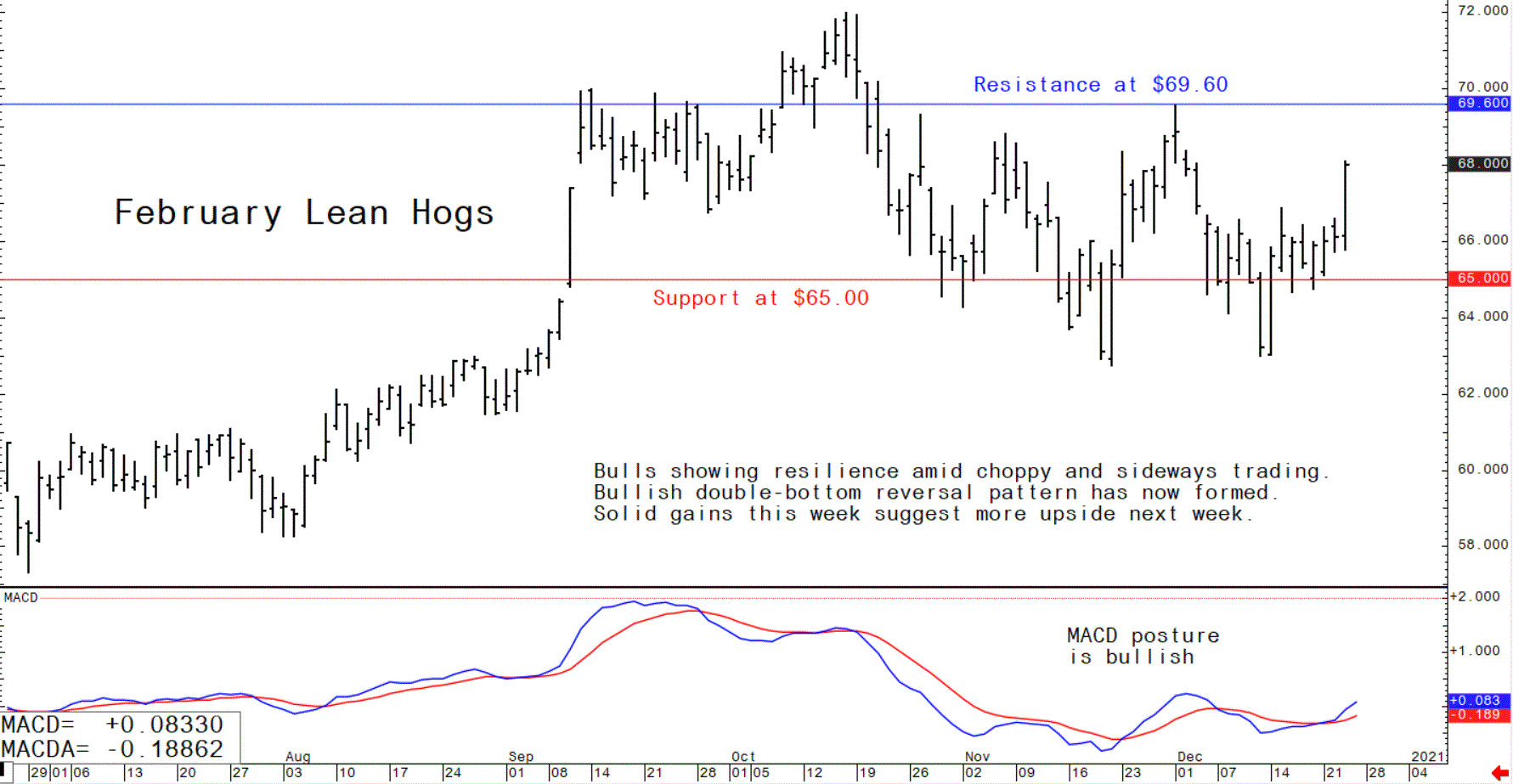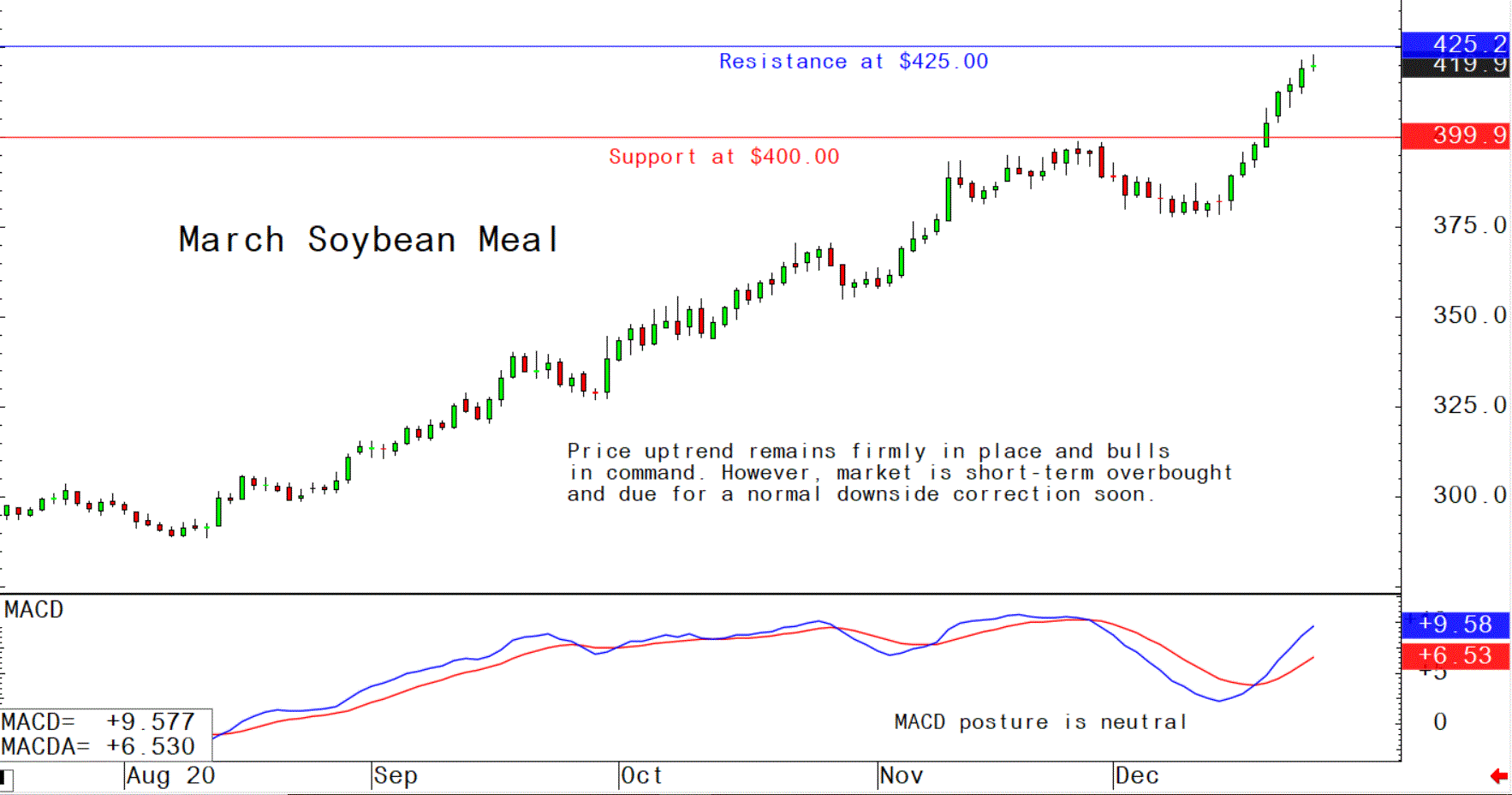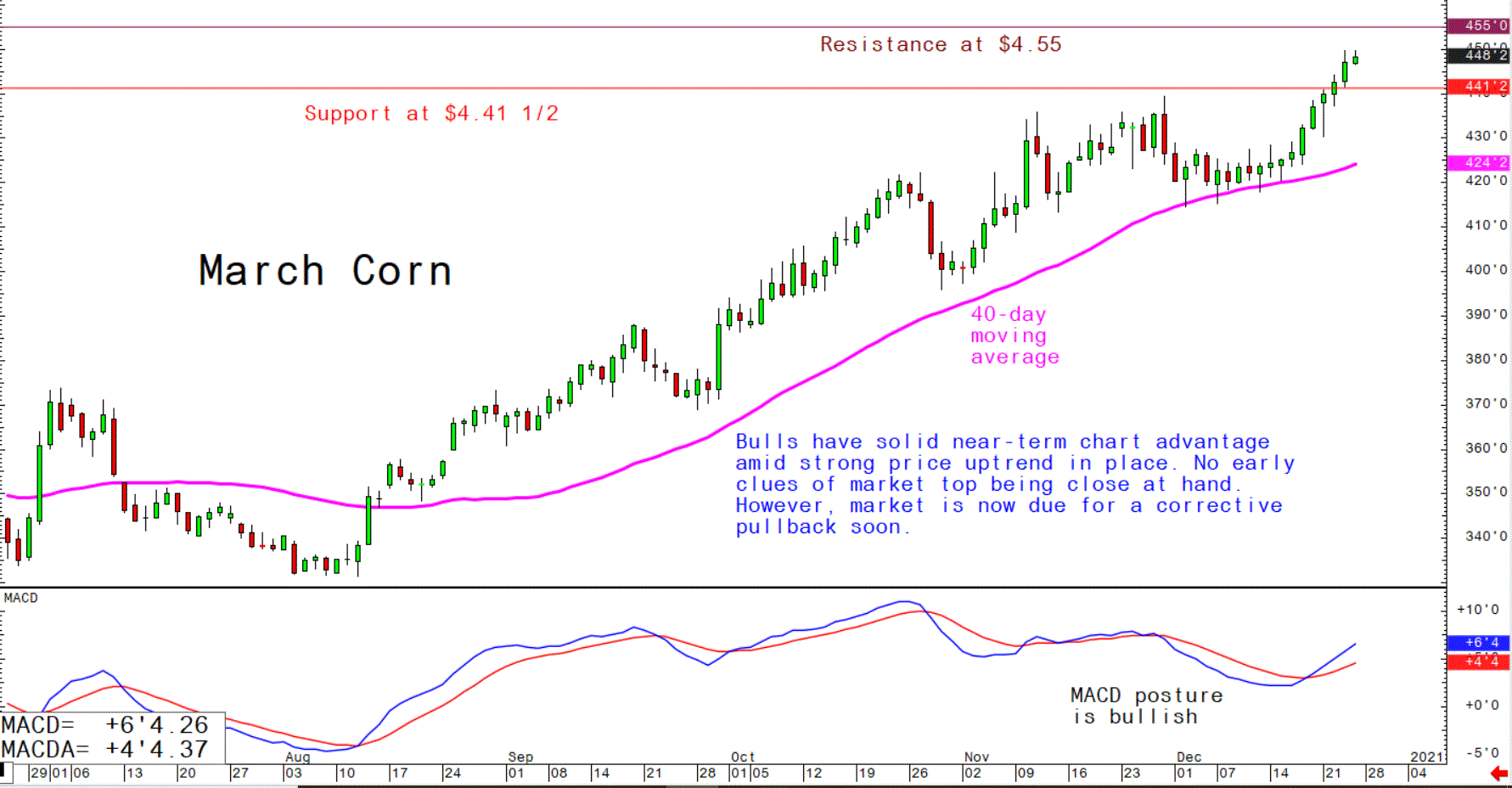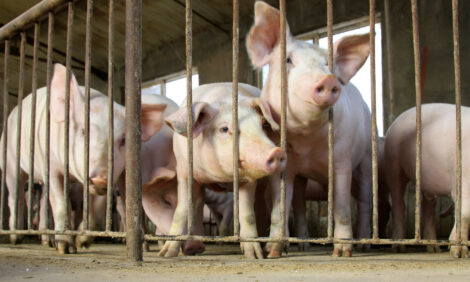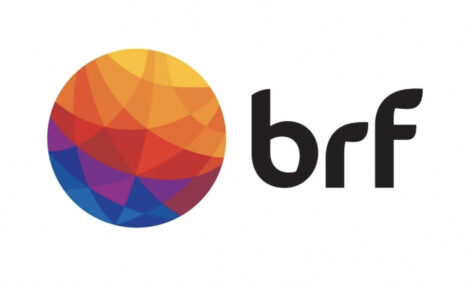



Pig outlook: Good week for hog market bulls, suggesting more gains coming
The pig traders’ perspective
Gains in lean hog futures this week sets the tone for more upside price action into the end of the year. Wednesday’s USDA hogs and pigs report may provide support to the nearby lean hog futures, amid the smaller market hogs and breeding herd. However, rallies could be contained in the summer futures contracts and price direction will remain dependent on Chinese pork import demand that many expect to fall from the record in 2020. The good news for the hog market is that frozen stocks at the start of December fell 28% below a year ago and the lowest for the month in 23 years.
Latest US Department of Agriculture (USDA) reports, and other news
USDA hogs and pigs report shows smaller breeding herd but larger farrowing intentions
USDA’s quarterly hogs and pigs report, released Wednesday afternoon, showed total US inventories and the number of hogs kept for market were close to pre-report estimates. However, the US breeding herd came in a slightly smaller than pre-report estimates and was 0.9% smaller than last quarter.
The September through November US pig crop fell by a smaller amount than expected from last year’s record and will be the second highest ever. Hog producers plan to farrow 1.6% more sows than a year earlier during the December to February quarter, much higher than the 4.5% drop expected by traders before the report. That reflects more gilts heading into breeding barns after the strong rally into the October highs.
The revisions to prior report estimates based on actual slaughter data were about as expected after the September report overstated supplies by about 7% last quarter. The revision made to the September 2020 all hogs and pigs inventory was 0.8%, the June 2020 all hogs and pigs inventory was 2.9%. the March herd was reduced 1.9% and last December’s herd was cut 1.2%.
US pork export sales slip in latest week
USDA Wednesday reported US pork net sales of 16,300 metric tons (MT) for 2020 were down 59 percent from the previous week and 44 percent from the prior 4-week average. Increases primarily for Mexico (17,000 MT, including decreases of 1,000 MT), Japan (2,300 MT, including decreases of 2,000 MT), Canada (1,500 MT, including decreases of 500 MT), the Philippines (900 MT, including decreases of 200 MT), and Guatemala (900 MT), were offset by reductions primarily for China (6,100 MT) and South Korea (1,800 MT). For 2021, net sales of 23,400 MT were primarily for China (7,700 MT), South Korea (3,900 MT), Colombia (3,50 MT), Japan (1,400 MT), and the Philippines (1,400 MT). Exports of 40,500 MT were down 4 percent from the previous week, but up 2 percent from the prior 4-week average. The destinations were primarily to Mexico (14,400 MT), China (13,100 MT), Japan (3,200 MT), South Korea (2,600 MT), and Canada (1,700 MT).
US beef net sales of 6,000 MT reported for 2020 were down 40 percent from the previous week, but up noticeably from the prior 4-week average. Increases were primarily for Japan (2,000 MT, including decreases of 400 MT), South Korea (1,900 MT, including decreases of 700 MT), Mexico (600 MT, including decreases of 100 MT), Canada (400 MT, including decreases of 100 MT), and Hong Kong (400 MT, including decreases of 400 MT). For 2021, net sales of 7,200 MT were primarily for South Korea (3,100 MT), Hong Kong (2,100 MT), Japan (700 MT), Mexico (500 MT), and Taiwan (300 MT). Exports of 13,500 MT were down 30 percent from the previous week and 27 percent from the prior 4-week average. The destinations were primarily to South Korea (3,700 MT), Japan (3,300 MT), Mexico (1,900 MT), Hong Kong (1,500 MT), and Canada (800 MT).
Taiwan clears imports of U.S. pork produced with ractopamine
Measures to allow imports of pork from hogs produced using the feed additive ractopamine were approved by Taiwan’s parliament, despite efforts to halt the action by the main opposition party, the Kuomintang (KMT). KMT lawmakers denounced the action, declaring that U.S. pork produced with the feed additive was “poison.” The Taiwanese government has taken the position that no one will be forced to eat the pork and the action will bring Taiwan in line with international norms. There are a mix of countries that allow and those that ban imports of pork from hogs raised on ractopamine. The action is also seen by many as an effort by Taiwan to secure a free trade deal with the U.S., which has complained about the country’s ban on importing pork produced with the feed additive.
China data shows another big jump in pork imports in November
The latest round of Chinese customs data showed the country imported 330,000 metric tons of pork in November, up 43.7% from year ago, according to Reuters. Through November 2020, pork imports were at 3.95 million metric tons, according to General Administration of Customs data, more than double the level seen during the same period in 2019, according to Reuters.
China’s hog herd continues to expand
China’s pig herd was nearly 30% larger than year-ago in November, according to the country’s ag ministry. The Chinese sow herd expanded more than 31%. The country continues to rapidly expand its hog herd after the African swine fever outbreak cut it roughly in half, though there are questions about the quality of the herd amid the quick expansion.
Short supplies of US holiday hams, some pork products
The Wall Street Journal reported some US meat suppliers are placing limits on how much pork supermarkets can order, grocers said, leading to less variety and fewer pork promotions ahead of Christmas. The pandemic has prompted some major processors, including Smithfield Foods Inc. and JBS USA Holdings Inc., to provide paid leave for workers considered higher risk due to their older age or pre-existing conditions, the companies have said. Some meat companies have made additional hires to offset higher-risk workers’ absences. To space workers farther apart, some meat plants have slowed processing speeds. Bacon, dinner sausages and lunch meat have also been in tight supply, grocery companies said.
The next week’s likely high-low price trading ranges:
February lean hog futures--$65.00 to $69.60, and with a sideways-higher bias
March soybean meal futures--$410.00 to $430.00, and with a sideways-higher bias
March corn futures--$4.35 to $4.55, and a sideways-higher bias
Latest analytical daily charts lean hog, soybean meal and corn futures.
